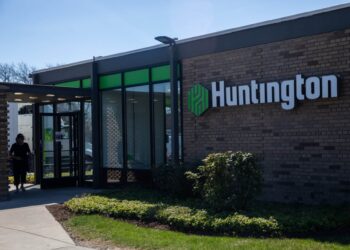5 Payment Technology Trends Shaping Auto Finance
 Lenders focus a lot of their attention on making sure the initial sales experience is fast, effortless, and intuitive for consumers, but is the same attention being given to how consumers make those payments once they leave the dealership?
Lenders focus a lot of their attention on making sure the initial sales experience is fast, effortless, and intuitive for consumers, but is the same attention being given to how consumers make those payments once they leave the dealership?
Payment technologies have changed a lot even in just the past two years. Anyone who lives in a big city knows the convenience of using electronic payments to split a big bill. Frequent cafe goers may utilize a rewards program they scan on their phone. And shoppers have become accustomed to handing over their credit cards to online outlets.
Auto lenders can learn from these trends in digital shopping to improve their payment technologies with apps, rewards programs, and chatbots. There are also some trends to follow in backend collections that will improve the customer experience as well.
Here are five trends in payment technologies:
1. Mobile Payments
Westlake Financial Services has an initiative the lender calls T1000, which has no greater meaning other than to provide a shorthand for their efforts to automate the payment process and make everything “easy as heck” for the consumer, Westlake President Ian Anderson told The Center for Auto Finance Excellence.
“[We’re pursuing] anything and everything that makes it easy for customers to make a payment and the biggest one lately is really mobile pay,” Anderson said. “We’re really into being able to make payments over the phone so we use Walletron, Apple Pay, and Google Pay.”
Across all consumer loan products, mobile payments still have a relatively low penetration to phone calls and online portals, according to a 2018 study from BillingTree. When respondents were asked about their plans for future technology adoption, mobile payments (29.3%) still fell second to online portals (30.7%).
“2019 could be the first year to take a more aggressive look at support for mobile payments, and how that may change the landscape of technology adoption,” according to the report. “Adoption of mobile bill presentment and payment processing should lead to new opportunities for agencies to further streamline operations and adopt new, even more innovative ways to serve the needs of their clients.”
2. Phone Calls Remain Important
Live-agent assisted calls still remain the No. 1 payment method offered by lenders across all consumer loan products according to BillingTree.
Similarly, computer operated phone calls — known as IVR calls — continue to grow “modestly,” according to the report. IVR adoption increased this year with 36% of respondents noting its use compared with 28% in 2017.
Westlake’s Anderson noted the companies increased use of IVR across its floorplan unit, Western Funding, and main auto lending segments.
3. Rise of the Apps
More than 61% of people use mobile phones to carry out banking activity and 48% of them use a dedicated banking app, according to Mobile Ecosystem Forum’s 2018 Mobile Money Report.
The trend is making its way to auto finance. For example, Navy Federal Credit Union jumped into the mobile space with an auto loan app in October 2016 and now sees 33% of its loan applications come from the app.
“You can get approved in minutes and sign electronically,” Joe Pendergast, vice president of consumer lending at Navy Federal, told the Center for Auto Finance Excellence in May. “Our customers want convenience.”
Westlake too has made apps for its various properties, Anderson said. “We have apps for all our companies: Flooring, Westlake, and Western Funding,” he said.
4. Chat Bots
Another form of payment technology that’s gaining steam is chatbots, but there is still some uncertainty about the longevity of the technology.
Although 80% of chatbot communications end with the customer writing “thank you,” 14% also lead to a chat with a live human being instead, according to a study of chatbot usage by SnatchBot. Additionally, 12% of those conversations were outright abandoned.
The technology has a low penetration rate among financial services and insurance companies — 11% — but the non-verbal form of communication remains popular for millennials.
“The other big initiative we have is Chat Bots, where the customer is online and talking to the computer,” Westlake’s Anderson said. “They’re asking, ‘How much do I have left to pay off,’ and the robot can provide the answer and gain access to the customer’s checking account.”
5. Automating the Servicing Team
Although there’s still a premium placed on live calls, there may be robots overseeing the collections and servicing team.
Santander Consumers USA for one uses a software called CallMiner to evaluate the quality of customer service interactions at call centers. However, the lender has received criticism from labor groups who claim the system is discriminatory to workers in the call centers.
In January, Santander responded by devaluing the importance of CallMiner to the employee’s incentive pay. Although Santander will continue to use CallMiner to monitor compliance, the company has been redesigning its incentive structure since last year and plans to finalize it by this year, the company said in the email.
CallMiner is still a “valuable tool” for assessing employee performance as well as ensuring dialer compliance, a company spokeswoman said.
Westlake too uses a call monitoring system called VisorBot — a supervising robot — that it developed internally for its servicing, originations, and sales teams.
“It’s helping improve the production and process to be more streamlined,” Anderson said. “People love it.”














